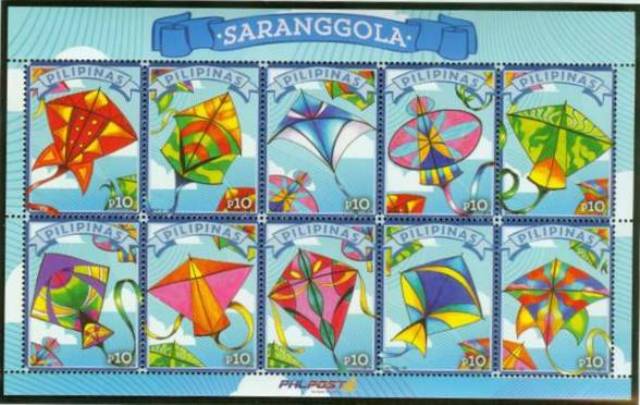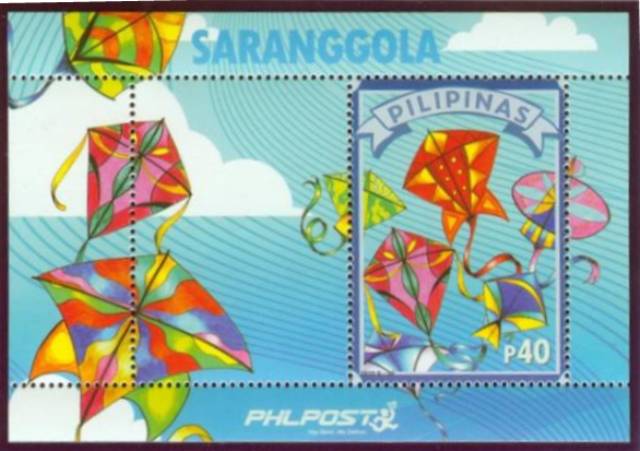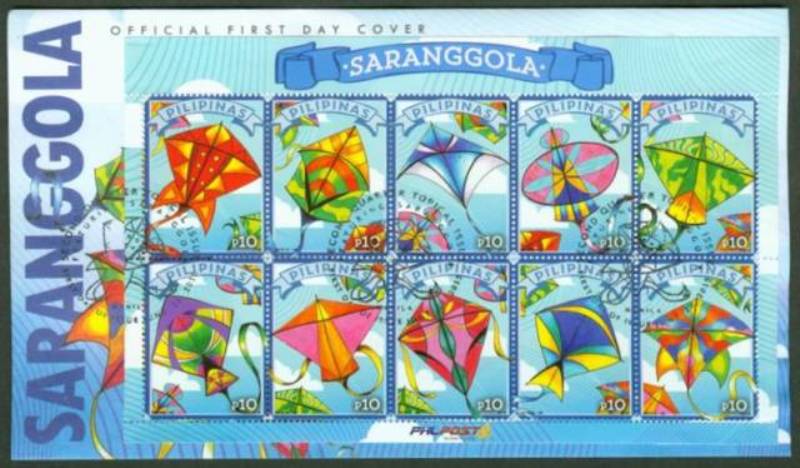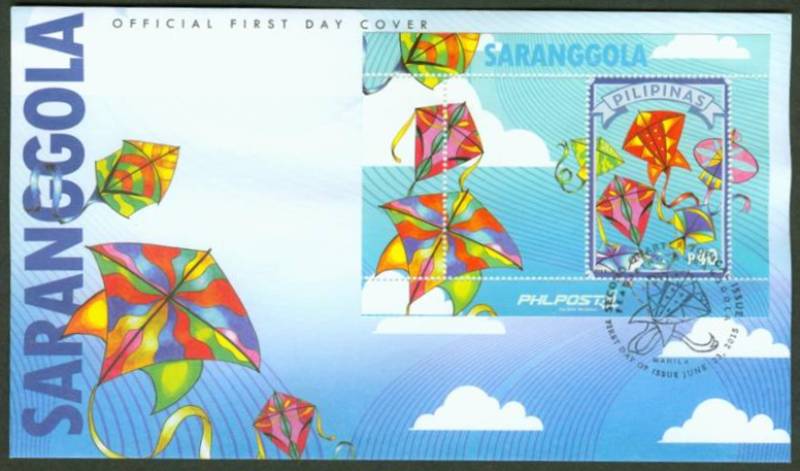2015, June 23. Saranggola (Kites) of the Philippines
Litho Offset, Amstar Company, Inc., Perf 14
Miniature Sheets of 10 Different Stamps; Souvenir Sheets of One + Label


10p Red/Yellow
10p Red/Green/Yellow
10p Blue/White/Purple
10p Blue/Pink
10p Green/Yellow-green
10p Purple/Green/Yellow
10p Pink/Yellow
10p Pink/Red
10p Violet/Blue/Yellow
10p Multicolor
Miniature Sheets of Ten - 12,000
40p Souvenir Sheets of One + Label (5,000)
First Day Covers: Manila

Saranggola - Kites of the Philippines
How kites are being used to save Philippine coral reefs
Kites have been used for hundreds of years to observe the skies, but now Filipino scientists and engineers are using them to observe our oceans. The brainchild of scientists and engineers from University of the Philippines, De La Salle University, and the Mapua Institute of Technology, the Automated Rapid Reef Assessment System (ARRAS) is designed to survey large reef areas in a short amount of time, low-cost, and to be easy to dismantle and transport.This aerial photography system consists of a small digital camera and GPS unit attached to a stabilizer, which is then attached to a kite. The kite deployment team flies the kite from the survey boat and controls its movement. The camera is programmed to take photos once every second to coincide with the GPS readings recorded.
What do marine scientists need aerial photos for? The aerial photos, combined with dive surveys, allow scientists to view an area at different scales, giving them a better understanding of the area. The aerial photos also serve as permanent visual records.There are three ways to get a camera in the air: a balloon, an Unmanned Aerial Vehicle (UAV), and a kite. The ARRAS team tested the balloon and the kite, with the kite winning because of the low cost, ease of transport, and fast deployment. "The balloon is good for no-wind conditions. But when the wind is moderate to strong, the balloon tends to sway. Balloons also need helium, which isn't cheap and readily available. On the other hand, kites are good for moderate to strong winds. It can also still be used in no-wind conditions as long as your vessel is moving to keep the kite in the air. It's also easy to deploy and fold for storage," says Natividad.
The Philippines lies within the Coral Triangle, said to be the center of the center of marine biodiversity. The Philippine coastline stretches 17,460 km, shared among more than 60% of the country's local government units and provinces. Coastal waters measure 266,000 km2 - bigger than the country's land area. Philippine coral reefs cover over 2.5 million hectares, providing ecosystem services including food, protection from storm surges, breeding and feeding ground of endangered species, natural products, and jobs through recreation and tourism. These ecosystem system services have a potential value of 38.7 trillion pesos per year. However, only 5% of Philippine reef areas are considered to be in good condition. Coral reefs are threatened by climate change and local human-caused stresses such as improper coastal development, sedimentation, pollution, overfishing, and destructive fishing practices.
-
Games
